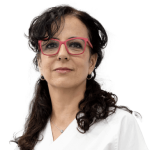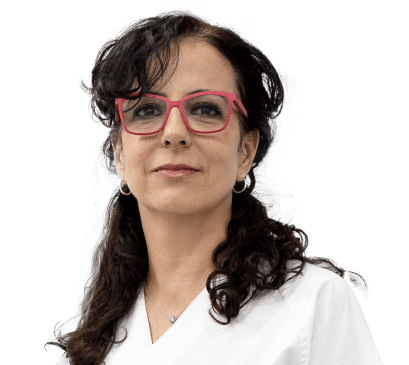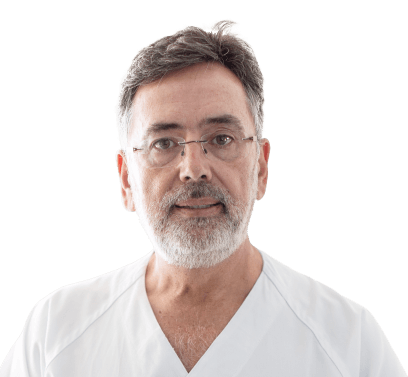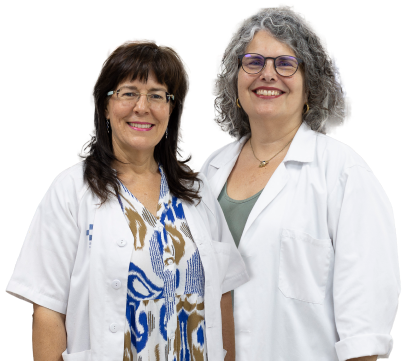



Is visual health care the responsibility of the ophthalmologist? Answering affirmatively could be interpreted as a simplification of a medicine compartmentalized into specialties. The correct answer in these times would be: “yes, but not only.” The ophthalmologist continues to be the central figure, but he is not the only healthcare provider who takes care of our eyes: today we are transitioning to a model in which other professionals also play an important role.
This is what is known as a multidisciplinary approach, which includes Primary Care and Hospital Care, “so that, together, we can act in a coordinated manner to offer better patient care,” explains Dr. Francisco Cabrera, head of Ophthalmology. of the Maternal and Child Island Hospital Complex of Gran Canaria. Better care has meant that in an autonomous community with an incidence of diabetes higher than the national average, “there are hardly any cases of secondary blindness caused by this disease,” he explains.
It was not something improvised. In 2008, the Canarian Health Service launched the Retisalud project. The objective was to detect diabetic retinopathy early, one of the main causes of blindness in adults. “This disease was usually diagnosed in advanced stages, often irreversible, but it is known that if it is detected in the initial stages, treatment can begin and its progression can be prevented. Therefore, the key was to screen the population at risk, that is, diabetic patients,” says Cabrera.
The guardians of eye health FAMILY DOCTOR
Primary care is the gateway to the health system and the ideal way to detect if patients with diabetes have visual alterations in the retina. The family doctor evaluates the retinographs and, if there is pathology, refers the patient to hospital control.
Photo: Quique Curbelo

Doctor Alicia González Sansó Family doctor at the Escaleritas Health Center in Las Palmas de Gran Canaria
Photo: Quique Curbelo
The pioneering Retisalud project involved Primary Care, “which is the gateway to the health system and from where it could be easier to identify these patients,” says Dr. Cabrera. It was not just about this identification, but about making a first evaluation of the eye. For this reason, all basic health areas were progressively provided with an essential tool, the retinograph, until then reserved for ophthalmology services.
At first there was reluctance, acknowledges Dr. Alicia González Sansó, a family doctor at the Escaleritas Health Center, in Las Palmas de Gran Canaria. “It was something that ophthalmologists did and at first we saw it as just another workload. Today we have it completely integrated into our service portfolio.”
The process, he explains, consists of two stages: one, the identification and recruitment of patients at risk; two, the examination of your eyes with the retinograph. “35% of people with diabetes have visual alterations in the retina; If we diagnose them early, they will not develop serious visual deficits. It’s about informing them and requesting that assessment,” he adds.
The guardians of eye health PRIMARY CARE NURSING
Nursing carries out the process of recruiting and searching for patients with diabetes, both to inform them of the retinopathy program and to monitor them over time and ensure that tests are performed periodically.
Photo: Quique Curbelo

Quira Mesa Nurse at the Escaleritas Health Center, in Las Palmas de Gran Canaria
Photo: Quique Curbelo
Nursing’s role in the process of reaching patients is important. “When we have a patient with diabetes in consultation, we always check if they have already had a retina check-up; If not, we ask for it,” explains Quira Mesa, a nurse at this same health center. “In other cases, when patients don’t come, we look for them.” The technical area gives us lists with the diabetes map, and there we see who has not had the examination and we get in touch with them.”
Next comes the retinography, which is performed by the nursing care technical assistants. “If the patient needs pupil dilation, the nurse takes care of it under protocol. Once the test is finished, the image is evaluated by the doctor,” adds Mesa.
The guardians of eye health OPHTHALMOLOGY
The ophthalmologist evaluates the cases of possible diabetic retinopathies that are referred to him by Primary Care and, depending on the stage of the disease, establishes the procedure that should be followed with each patient.
Photo: Quique Curbelo

Doctor Francisco Cabrera Head of Ophthalmology of the Maternal and Child Island Hospital Complex of Gran Canaria
Photo: Quique Curbelo
Every morning, Dr. González Sansó checks her inbox for pending retinographies. “We are trained and accredited to do this evaluation. If there are no doubts and everything is fine, the patient is scheduled for a new review in one or two years. If I have any questions, I contact the ophthalmologist online to evaluate it. It is a way to continue improving our training.”
In cases where lesions are seen that suggest retinopathy, it is time to schedule the patient for ophthalmology follow-up. Thus, explains Dr. Cabrera, “we evaluate you and if we see that you require intravitreal treatment, we coordinate with the hospital pharmacy, another specialty that has a fundamental role and with which we must be in close contact.”
The guardians of eye health HOSPITAL PHARMACY
Patients with diseases such as diabetic retinopathy or age-related macular degeneration (AMD) will require intravitreal treatments. These drugs, which require strict control, are dispensed through the Hospital Pharmacy. Close communication between this service and the Ophthalmology service is essential.
Photo: Quique Curbelo

Cristina L. Crespo (left) and Aránzazu Velaz Suárez Head of Hospital Pharmacy at the Maternal and Child Island Complex of Gran Canaria and Pharmacist in this unit
Photo: Quique Curbelo
The treatment of ocular pathologies such as diabetic retinopathy and one of its most serious complications, diabetic macular edema or age-related macular degeneration (AMD) usually require intravitreal injections. “They are for hospital use and require close monitoring,” explains Mª Aránzazu Velaz Suárez, head of Hospital Pharmacy at the Insular Maternal and Child University Hospital Complex.
The specialist recalls that, in the Canary Islands, the prevalence of diabetes is very high “and so are eye pathologies secondary to this disease. “Ophthalmologists prescribe treatments at a certain cadence and daily treatments are validated in the unit.”
The volume of work is increasing, says Cristina L. Crespo, pharmacist in this unit. “In recent years the number of patients treated has increased, currently between 40 and 60 a day, and so has pharmaceutical care in this area. That is why it is very important that there is good communication with the head of service, as well as with the prescribers, to speed up the process and resolve any questions or incidents that may arise without delaying attention.”
Between them, blindness associated with diabetes has practically become a thing of the past, concludes Dr. Cabrera. “With Retisalud, practically 70% of the diabetic population has been screened. Ophthalmologists only deal with cases in which there is pathology. We are now also in the development phase of software “reading and interpretation using artificial intelligence to reduce pressure on primary care doctors.”